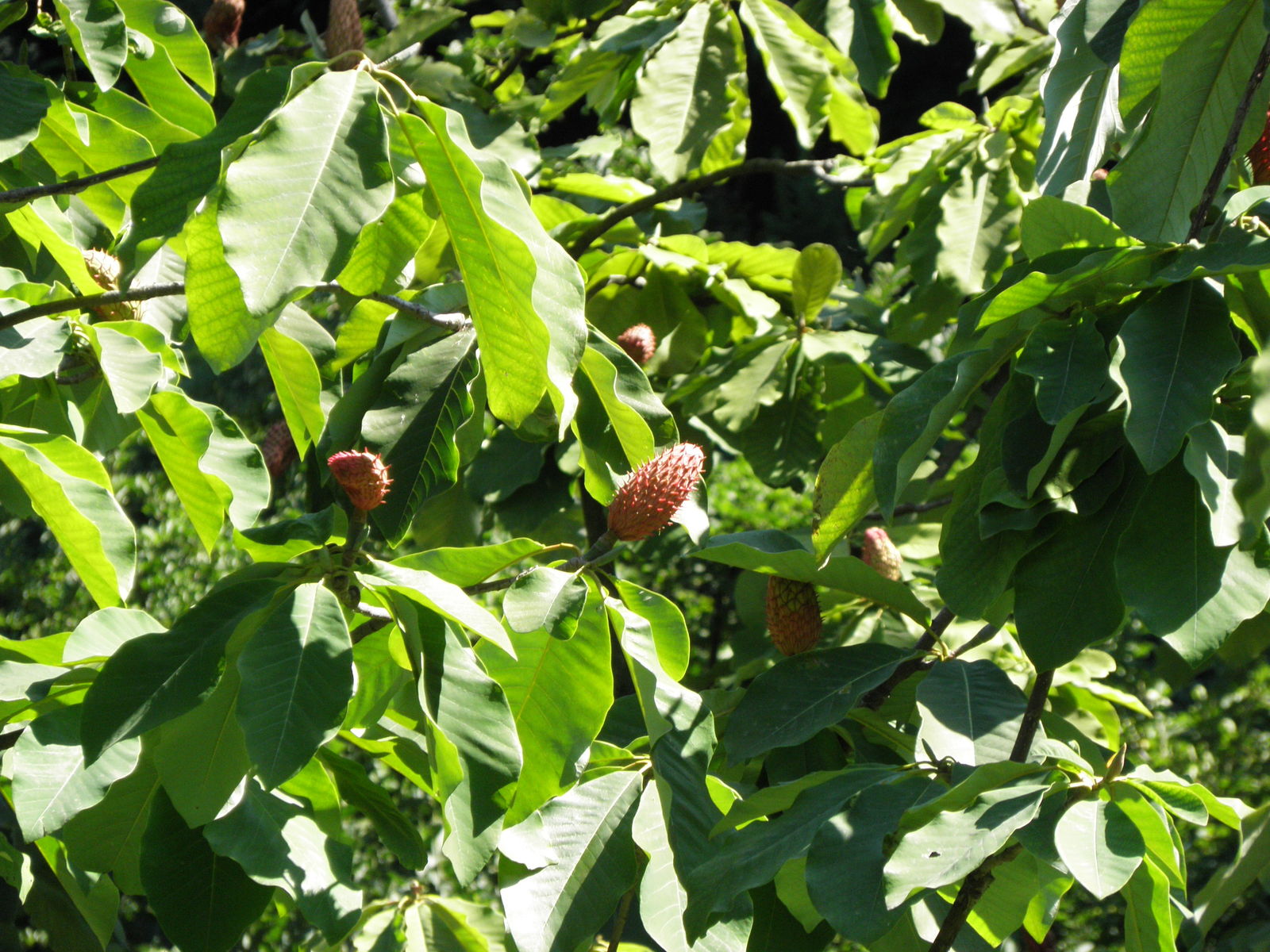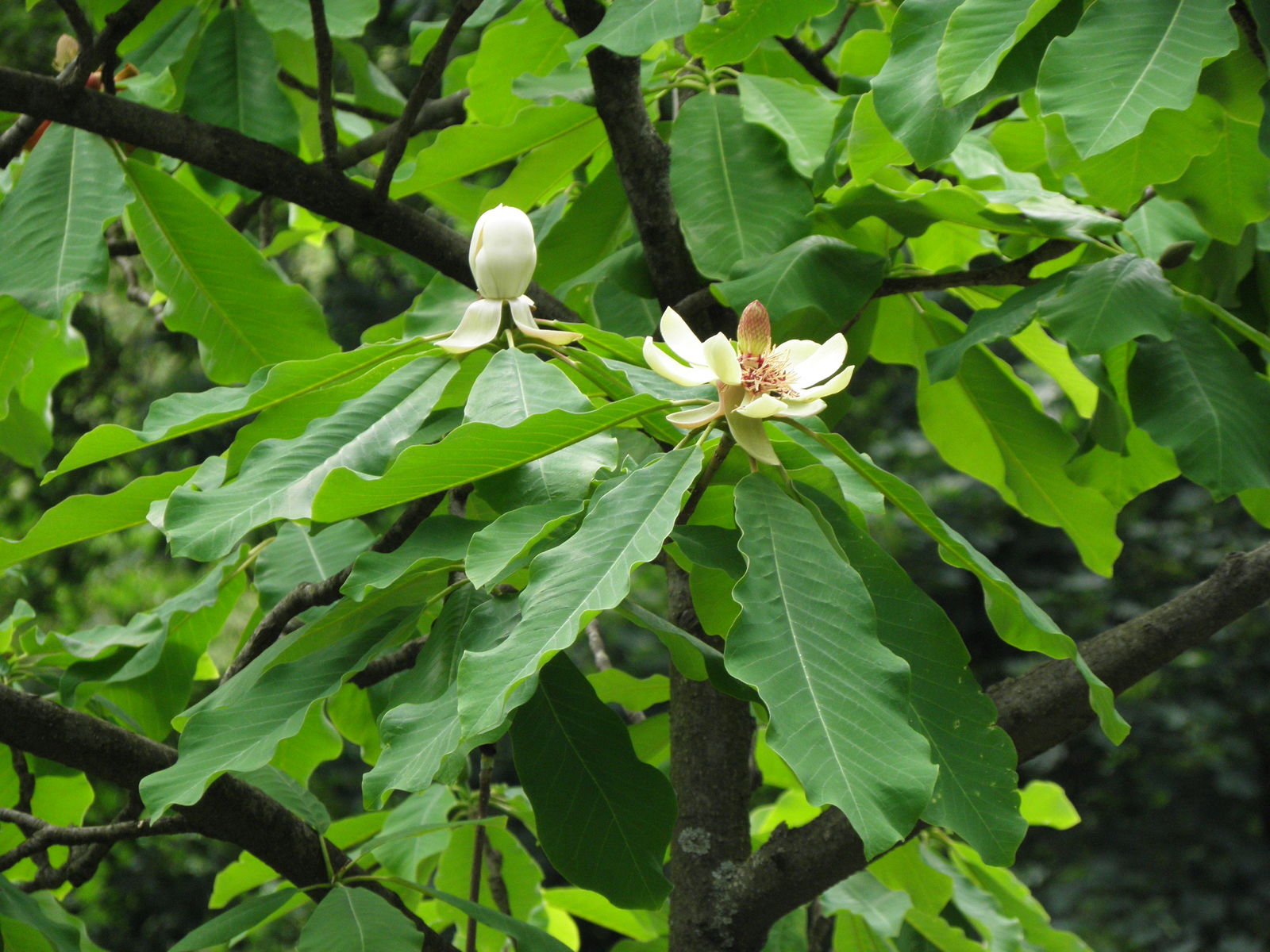Family: Magnoliaceae
Author: Thunb.
Bibliography: Trans. Linn. Soc. London 2: 336 (1794)
Year: 1794
Status: accepted
Rank: species
Genus: Magnolia
Vegetable: Unknown
Observations: S. Kuril Is. to Japan
Description
The Japanese whitebark magnolia, scientifically known as Magnolia obovata, is a striking and majestic plant belonging to the Magnoliaceae family. This magnificent species commands attention with its impressive height and large, fragrant flowers, making it a prized specimen among horticulturists and garden enthusiasts.
Native to regions spanning from the southern Kuril Islands to Japan, the Japanese whitebark magnolia thrives in temperate climates and is well-adapted to the woodland environments in which it naturally occurs. Observations in its native habitat have contributed significantly to the understanding of its growth patterns and ecological preferences.
The tree typically reaches heights of 10 to 25 meters, with a spread of about 5 to 10 meters, creating a broad and rounded canopy that offers ample shade. Its bark is smooth and grayish-white, a distinctive feature that adds to its aesthetic appeal. The leaves of Magnolia obovata are large, obovate in shape, and dark green, providing a lush backdrop for its spectacular blossoms.
The most captivating aspect of the Japanese whitebark magnolia is undoubtedly its flowers. Blooming in late spring to early summer, the flowers are creamy white with a hint of yellow and exude a delightful, citrus-like fragrance. Each blossom can reach up to 20 centimeters in diameter, making them some of the largest and most impressive flowers in the magnolia genus.
Magnolia obovata has been mentioned in scientific literature as early as 1794, notably referenced in the Transactions of the Linnean Society of London, affirming its long-standing recognition and study by botanists. The Swedish botanist Carl Peter Thunberg is credited with the formal description and naming of this species, highlighting its historical significance in botanical research.
Cultivating Japanese whitebark magnolia requires well-drained, slightly acidic soil and a location that receives full sun to partial shade. While relatively low-maintenance, it benefits from regular watering during dry spells and the occasional application of fertilizer to promote healthy growth and abundant flowering.
In landscape design, the Japanese whitebark magnolia serves as an exquisite focal point, often planted in residential gardens, parks, and botanical gardens. Its combination of stately presence, beautiful foliage, and breathtaking flowers make it a desirable addition to any green space, offering both ecological benefits and ornamental value.
Overall, Magnolia obovata stands out as a symbol of natural beauty and botanical wonder, continuing to captivate and inspire those who encounter it in its native habitat and beyond.
Common Names
Eng: japanese whitebark magnolia, japanese big leaf magnolia, whiteleaf japanese magnolia
Swe: junimagnolia
Kor: il-bon-mong-nyeon
En: Japanese whitebark magnolia, Japanese Bigleaf Magnolia, Japanese Big Leaf Magnolia, Whiteleaf Japanese Magnolia
Ar: ماغنوليا بيضاوية
Zh: 日本厚朴
Cs: Šácholan obvejčitý
Fi: Rohtomagnolia
De: Honoki-Magnolie
It: Magnolia giapponese
Ja: Hō-no-ki
Ko: 일본목련, Il-bon-mong-nyeon
Mk: Крупнолисна магнолија
Fa: درخت خیار ژاپنی
Ru: Магнолия обратнояйцевидная
Sv: Junimagnolia
Zh-tw: 日本厚樸
Zh-hant: 日本厚朴
Synonyms
- Magnolia hoonoki (Siebold)
- Magnolia honogi (P.Parm.)
- Magnolia hirsuta (Thunb.)
- Yulania japonica var. obovata ((Thunb.) P.Parm.)
- Magnolia hypoleuca var. concolor (Siebold & Zucc.)
- Magnolia hypoleuca (Siebold & Zucc.)
- Houpoea obovata ((Thunb.) N.H.Xia & C.Y.Wu)
Distribution
- Japan (native)
- Kuril Is. (native)
Additional Images
Habit
Taken Aug 22, 2021 by NaNo_ N9 (cc-by-sa)
Taken Jun 21, 2022 by Kai Best (cc-by-sa)
Taken Oct 8, 2022 by Andrzej Konstantynowicz (cc-by-sa)
Leaf
Taken Aug 18, 2008 by Frédéric Dupont (cc-by-sa)
Taken May 16, 2021 by Andreas Schmid (cc-by-sa)
Taken Sep 11, 2022 by Seon Woong Kim (cc-by-sa)
Taken Oct 8, 2022 by Andrzej Konstantynowicz (cc-by-sa)
Taken Oct 8, 2022 by Andrzej Konstantynowicz (cc-by-sa)
Bark
Taken Jun 21, 2022 by Kai Best (cc-by-sa)
Other
Taken Sep 12, 2020 by Philippe de Spoelberch (cc-by-sa)
Fruit
Taken Aug 6, 2021 by Sophie Richard (cc-by-sa)
Taken Sep 11, 2022 by Seon Woong Kim (cc-by-sa)

© copyright of the Board of Trustees of the Royal Botanic Gardens, Kew.

© copyright of the Board of Trustees of the Royal Botanic Gardens, Kew.

© copyright of the Board of Trustees of the Royal Botanic Gardens, Kew.
Sources
- WFO (No URL)
- IPNI (No URL)
- GBIF (https://www.gbif.org/species/3153160)
- POWO (http://powo.science.kew.org/taxon/urn:lsid:ipni.org:names:554784-1)
- PlantNet (https://identify.plantnet.org/species/the-plant-list/Magnolia obovata Thunb.)












